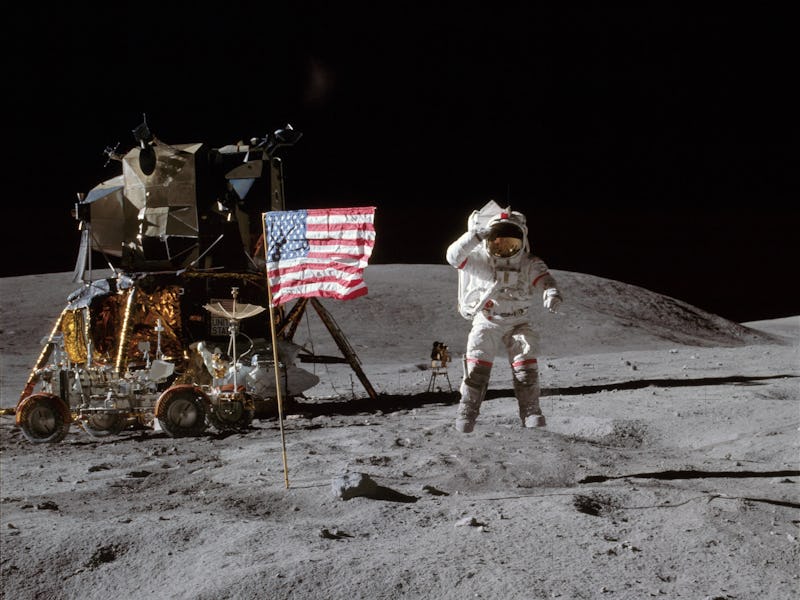NASA’s Moon Trip Just Got Pushed Back After Trump's Budget Cuts
It's not going to happen during Trump's first term.

In December 2017, President Donald Trump signed a directive titled “Space Policy Directive 1,” which mandated NASA aid in sending humans to the moon and to Mars. But the Trump administration’s 2019 budget proposal, released on Monday, suggests that’s probably not going to happen anytime soon.
According to the proposal, the Trump administration is planning on launching a crewed mission “around the Moon by 2023.” The budget calls for spending $19.6 billion on the space agency in the 2019 fiscal year, a $500 million increase compared with the current level. This might seem like a lot, but consider other spending increases. The Department of Defense, for instance, would receive an additional $80 billion, which puts what NASA is getting into perspective.
While this proposal isn’t actually a cut, it’s as close as it gets. NASA is getting a meager 2.6 percent increase in spending, a figure barely more than the 2017 inflation rate of 2.1 percent, according to the Bureau of Labor Statistics. If the space agency continues to get allocated this same kind of amount of money every year, its buying power won’t be able to keep ahead of inflation, effectively tying its hands.
The Trump administration's summary of its NASA budget proposal.
By looking at the cost of past piloted space missions, it becomes clear that the proposal would greatly hinder NASA’s ability to pull another one off. According to ExtremeTech, the Apollo 11 mission was reported to have cost $25.4 billion in 1973.
Using an inflation calculator that uses the average inflation rate between then and now (3.88 percent per year), this price tag balloons to $141 billion.
Back in 2005, NASA estimated that it would cost $104 billion to return to the moon. Using the same calculator, the given estimated cost adjusted to inflation would be $131 billion.
NASA space shuttle lifting off
Since 2005 advances in aerospace technology have certainly given NASA the ability to conduct more cost-effective missions, however, the price of piloted launches will most likely remain rather high due to safety precautions and coordination. With the figures proposed, it would take NASA more than five years to accumulate anywhere near $100 billion, and that’s assuming it doesn’t have to spend any of those resources on anything else.
The budget proposal seems to be pushing NASA into strengthening its ties with the aerospace private sector, like SpaceX. But the agency might need to be wholly reliant on third parties to undertake the monumental task of crewed missions if this level of funding continues.
For an administration that was so psyched about sending people to the moon to begin with, this sure doesn’t look like a serious step toward the next giant leap.